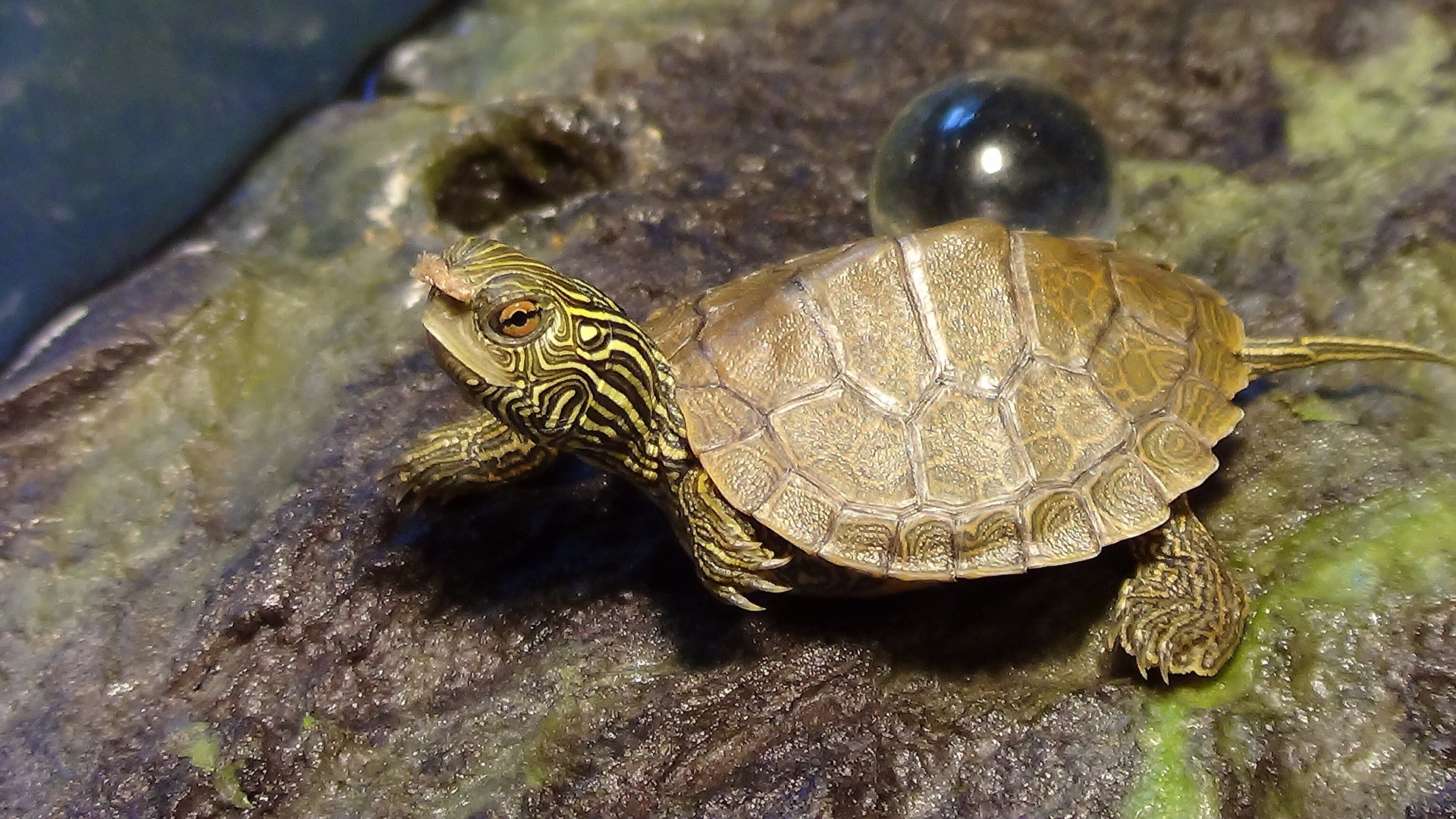
Anywhere that’s wet and warm with access to sunlight is a likely home to algae growth. And that means the aquariums you keep fish and aquatic turtles in are prime targets for algae to take up residence. Although a little algae won’t hurt your exotic pets, an algae overgrowth can be harmful to their health. And for turtles, algae can even start to grow on the shell. As with the tank, a little algae growth on your turtle’s shell is fine. But when algae takes over, here’s what you can do to remove it.
Preventing algae in the aquarium
Algae are like the weeds of wet environments. They spread quickly and keep coming back. If you keep the lights on in your tank for long periods or keep your tank in direct sunlight, algae growth is a given. To reduce the chance of overgrowth, you can follow good aquarium hygiene by changing out the water every week. Only change about one-eighth of the total amount of water in the aquarium each time.
If algae is a continuous problem in your tank, even with regular cleaning, you may find that adding a small amount of aquarium salt helps. Don’t worry--you won’t add enough to harm your freshwater inhabitants. In fact, a little salt can help balance the electrolytes in the water, making the environment healthier for your pets. Or you can attempt to starve the algae by supplying your tank with live plants that use up some of the nutrients that would otherwise be available to algae.
(For turtles, a good filter is essential for removing waste, which feeds aglae.)
You can also use an aerator or filter to keep water flowing and clean. Moving water is harder for algae to grow in. All of these steps, however, cannot turn around a tank that is already overgrown. The other important step is to clean your tank regularly and remove algae when you see it.
Removing algae stuck on aquarium walls and decor
There are three main steps to cleaning up algae once it’s already growing in your tank.
- Scrape algae off the walls. Algae scrapers are inexpensive and made to safely remove stuck-on algae without damaging glass or acrylic aquariums.
- Scrub decor with algae growth. If you find lots of algae on large rocks or other habitat decor, remove them from the tank and scrub off the algae.
- Vacuum the gravel at the bottom of the tank. You can do this whenever you perform water changes. Siphons are available that vacuum clean the gravel.
Chemicals are available for removing algae from fish and turtle aquariums, but generally these are not safe to use around your exotic pets. It’s better to avoid the harsh chemicals and just practice good aquarium hygiene.
Don’t stress too much about algae in your tank. A little of the green stuff is actually good for fish and aquatic turtles. And you can never get rid of it entirely. Find out more about keeping a healthy aquarium by following The Tye-Dyed Iguana exotic pet blog.
